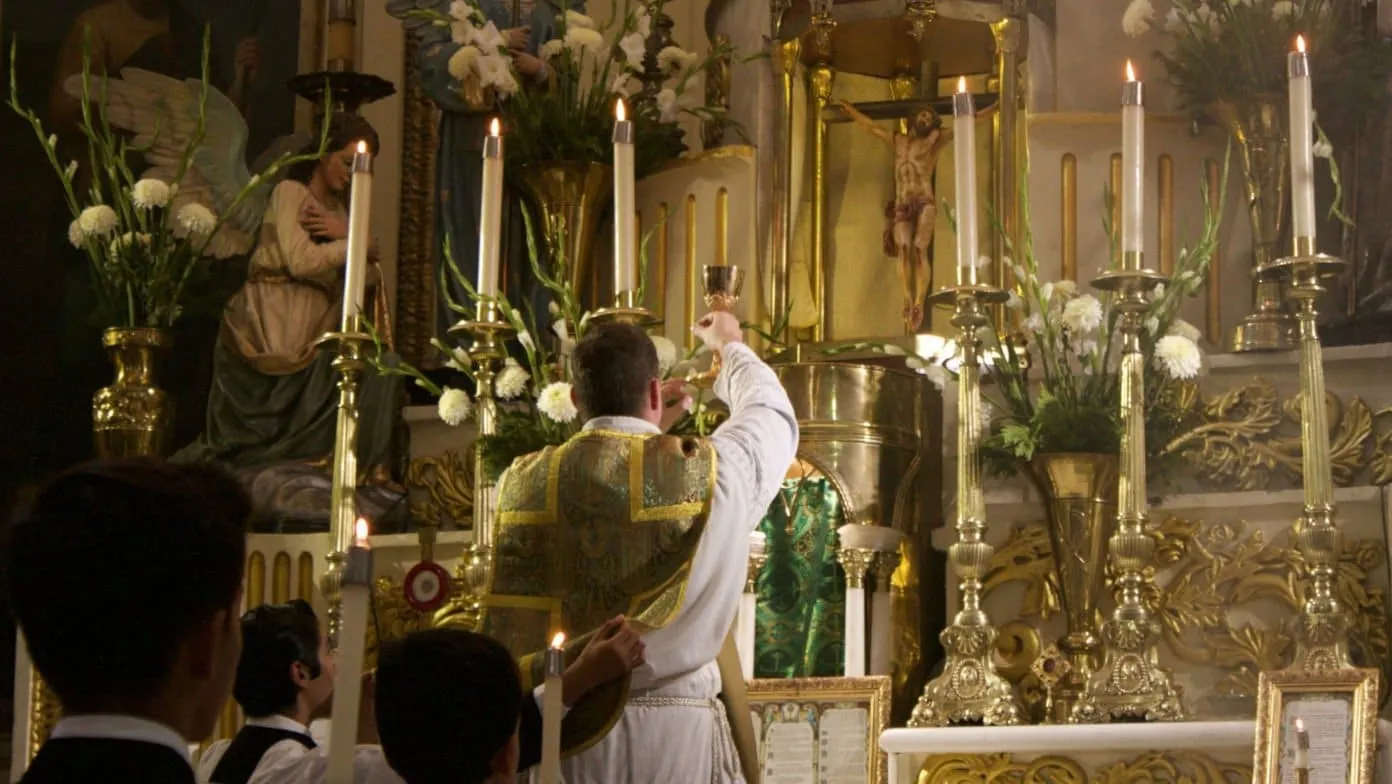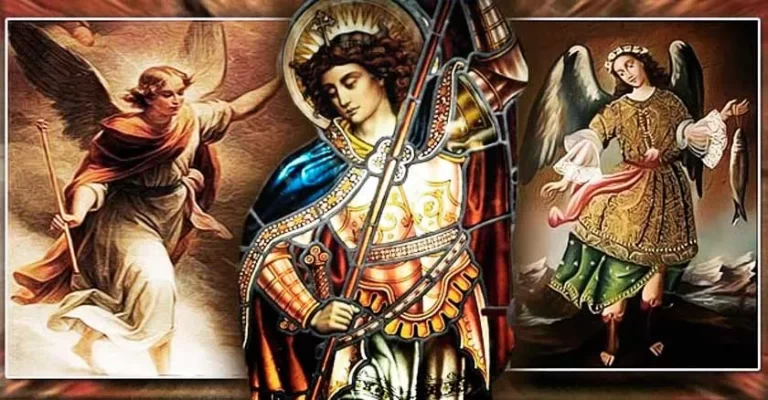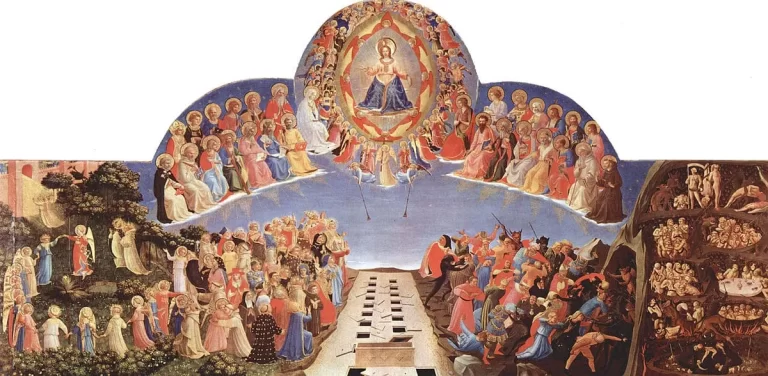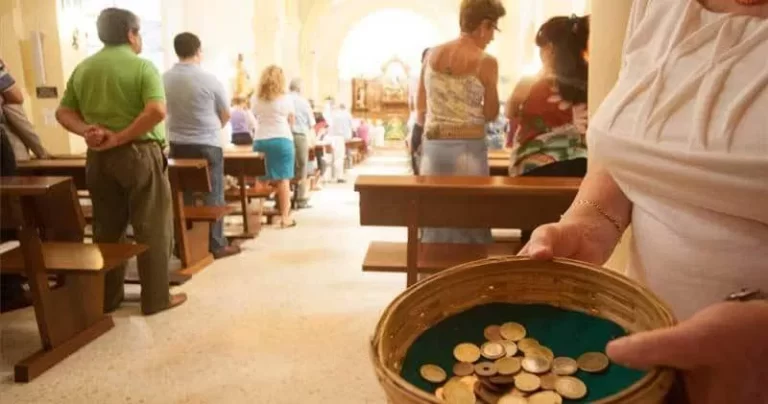Mass Responses and Miscellaneous Christian Texts
You are one of those people who go to Mass every Sunday without fail and want to learn a little more about it, don’t wait any longer and discover the Responses to the Mass and some Christian Texts.
What is a Mass?
The mass is classified as an act of the Catholic Church and of different Christian aspects, since both are based on the sacrament of the Blessed Sacrament, that is, it is taken as the center and scheme that Christianity itself has, leading all those religions to are forced to accept the same cycle for the same purpose. In general, in the part of the ceremonies in the Latin Catholic Church, what is the first communion and among other confessions such as Lutheranism, it is called Holy Mass and in what would be the Eastern Catholic ceremonies in the Coptic and Orthodox churches. they can be called Divine Liturgy.
On the other hand, in the evangelist religion it is taken that the mass was given by Jesus Christ himself within the last supper of Jesus of Nazareth together with all his apostles despite this when the catechism is seen within the world of the church and the mass Catholics teach that the Holy Mass can be presented in the same way within the sacrifice of Calvary at the moment of celebrating the sacrament of the Eucharist with this the father consecrates the wine and the bread with a sacramental prayer to convert it into the body and blood of Christ himself.
Development of a Holy Mass
In itself, a mass develops under a very strict structure that is based on the prayers of the mass performed by the priest while the subjects give their responses to the mass . Within this a mass is performed as follows:
Entrance Rite
Said rite is developed under the liturgy of the word where it begins with the entrance song where the altar boys begin to enter to enter the priest and thus begin with the act of the mass from the initial greeting, the penitential act, glory and finally the opening prayer. In some celebrations said mass changes but not much differently, since only a preamble is made and the mass begins at once, so the initial rite is not taken into account.
Initial Greeting
After the singing and the entrance of the priest, he asks all his parishioners to stand up to be able to make the sign of the cross in order to give presence to Christ, when this happens, all the people found in the mass end the prayer with an Amen for thus continue explaining briefly what will be dictated at mass. Said greeting is performed as follows:
“Priest: In the name of the Father, and of the Son, and of the Holy Spirit.
Parishioners Response: Amen.
Priest: The grace of our Lord Jesus Christ, the love of the Father and the communion of the Holy Spirit be with you. Response of the Parishioners: And with your spirit”
penitential act
In this part, one begins by asking God for forgiveness for all those sinners so that they can join the penitential act. When doing this, a brief moment of silence is taken in which a confession of all the sins that are possessed is given. This silence ends at ring a bell where the priest gives absolution. With this, all the sins that are possessed are eliminated, this act is usually carried out with a longer time on Sundays and at Easter times or festivities of some Saint, since the father can sprinkle vendita water for each corridor while forgiveness is asked.
Said sprinkling of water is not only carried out on Ash Wednesday in Holy Week, in what is the canonical inauguration of a bishop and in the Easter Vigil, since in the place of the water the reading of the pontifical decree is carried out of the congregation. The act is carried out as follows:
“Priest: To worthily celebrate these sacred mysteries, let us acknowledge our sins.
Response of the Parishioners: I confess before almighty God and before you, brothers, that I have sinned a lot of thought, word, deed and omission. Because of me, because of me, because of my great fault. That is why I ask Holy Mary, ever Virgin, the angels, the saints and you, brothers, to intercede for me before God, our Lord.
Priest: Almighty God have mercy on us, forgive us our sins and lead us to eternal life. Parishioners Response: Amen.
Priest: Lord, have mercy. Parishioners Response: Lord, have mercy.”
Gloria
At the end of the Penitential Act, the hymn of Glory is sung or prayed, said hymn is a venerable prayer in which the Catholic Christian Church consecrates itself within the Holy Spirit and glorifies God to give its supplications. Said prayer cannot be modified and is started by the priest so that later the parishioners begin to sing them. If they do not do so, it is polite to recite it. This hymn is usually performed every Sunday of the year, on celebrities, solemn parties and masses for the dead. Said prayer or prayer is:
“Glory to God in the highest, and on earth peace to the men whom the Lord loves. For your immense glory we praise you, we bless you, we adore you, we glorify you, we give you thanks. Lord God, heavenly King, God the Father almighty. Lord only Son, Jesus Christ, Lord God Lamb of God, Son of the Father; You who take away the sin of the world, have mercy on us; You who take away the sin of the world, hear our plea; You who are seated at the right hand of the Father, have mercy on us; Because only you are Holy, only you Lord, only you Most High Jesus Christ. With the Holy Spirit, in the glory of God the Father. Amen.”
Opening Prayer
Said prayer is performed only at opportune moments where the priest deems convenient, this is done so that all those present at the mass join in a silent prayer to ask for all those homeless or world problems which need the strength of God, Generally, while the parishioners are silent, the priest prays for all of them and the world, giving permission for the presence of Jesus Christ to enter the hearts of each one to solve their problems.
After that, the priest recites the collect prayer that is addressed to God the Father, Christ and the Holy Spirit, said prayer is:
“Through our Lord Jesus Christ, your Son, who lives and reigns with you in the unity of the Holy Spirit and is God for ever and ever; if it is addressed to the Father, but at the end of this prayer the Son is mentioned: He, who lives and reigns with you God the Father almighty in the unity of the Holy Spirit and is God for ever and ever; if addressed to the Son: You who live and reign with the Father in the unity of the Holy Spirit and are God for ever and ever. Amen”
liturgy of the word
The liturgy of the word are all those readings that are taken from the Holy Scripture of the Bible, since in it you can find the speeches of Christianity and Catholicism, the creeds and all the prayers of the faithful, in these scriptures it is possible to appreciate how God describes his people while discovering all those secrets of salvation and redemption. Christ within his own words is manifested among the most devout, so that word becomes proper to each person while silence and songs succumb in a show of admiration and faith of this.
Said liturgy is usually celebrated in a very favorable way within the meditation, of course, great caution must be exercised when it comes to rainfall that may prevent the harvest. Within this, we usually have brief moments of silence within the mass to be able to feel the Holy Spirit within our hearts and thus receive the word of God in a gratifying way and respond through prayer, said silence is performed at the beginning, at the end of the first and second reading or at the end of the liturgy.
These are readings from the same bible which the first three parts are usually read by devout people who are not internal to the legacy but nevertheless in some masses only the person in charge of it who is within the priest’s group reads, since it is gave him a short seminar to do this work. In each reading, what is the table of the word of God must be located to all the parishioners in order to make each reading available and illustrate what the wills and the salvation history itself would be.
The readings and the responsorial psalm are not usually replaced by other biblical texts, since these have the word of God, therefore in each mass the people or the parishioners present can celebrate the participation of course they are requesting before the beginning of the mass. For what is given in the traditions all the readings are proclaimed by the reader but the gospel is the one who dictates which of the deacons should read, in case of not having a deacon the priest should perform the readings.
At some moments the gospel proclaims three people to carry out the readings on the days of the passion of the Lord, Good Friday and Palm Sunday, these people are the deacons, the laity and another priest who does not correspond to give the mass, after To do the reading, the reader himself must pronounce the acclamation of Amen. At the end of each reader before leaving the podium he must bow and bow to the altar.
Profession of Faith: Creed
Within this profession, the prayer of the faithful is carried out in which various requests are made to God, this is universal, so the people usually respond with faith towards the word of God and accepting the priest who offers the requests for the salvation of the whole world.
Normally it is recommended to perform such a prayer when there is a large number of parishioners inside the church in such a way that the prayers are heard and rise to heaven inside the holy church. In most of the times it is asked for the needs that they have within the church, for the salvation of the most helpless, the community and for the rulers of each nation without counting that in other celebrities such as marriages, baptisms, first communions or obsequies the prayer can be changed so that it is given to better requests.
This prayer is completely directed by the priest in charge, he usually invites the devotees to pray and ends with a short prayer, usually the priest usually prays wisely and with few words in order to make the community reflect. find at mass. While it is being done, people must stand while praying either aloud or silently, everything depends on how comfortable the devout person feels. The usual prayer is:
“I believe in God, Almighty Father, Creator of heaven and earth. I believe in Jesus Christ, his only Son, our Lord, who was conceived by the work and grace of the Holy Spirit, was born of the Virgin Mary, suffered under the power of Pontius Pilate, was crucified, died and was buried, descended into hell, on the third day he rose from the dead, ascended into heaven, and is seated at the right hand of God, the Father Almighty. From there he is to come to judge the living and the dead. I believe in the Holy Spirit, the holy catholic Church, the communion of saints, the forgiveness of sins, the resurrection of the body and eternal life. Amen.”
Presentation of the Offerings
These offerings begin with the bread and wine which is offered to God by the priest in charge who along with it is also purified while washing his hands, when doing this the song of the offering of the day begins or in such a case silence. After that, the offering of bread and wine is taken to the altar so that they become the body and blood of God. After that, the corporal, the purificator, the chalice and the missal should be placed on the Lord’s table to begin with the offerings, be it food, money or any donation for the most helpless, this can be given at the same mass or before she. In case of being at mass, these people, when going to look for the body of Christ, will take the offering to the priest so that he can deliver it to the altar boys to place it on the altar.
Once all the offerings have been placed on the altar, the priest invites the parishioners to pray with him, the prayer that he must recite is:
“Lord, receive this sacrifice in your hands to the praise and glory of your name, for our good and that of all his holy Church”
Eucharistic Prayer
After the offerings, the Eucharistic prayer is performed, which in the center of the mass where thanks are given, the priest asks his disciples to pray with their hearts towards the community, said prayer has a sense of great grouping of the devotees to the give faith to Christ giving him the greatness he deserves. This prayer should be heard silently and is performed as follows:
- The preface: which is the beginning of the prayer under a hymn where one praises one’s own thanksgiving.
- Sanctus (Saints): at this time the priest and the people in the mass sing for the Saints
- Epiclesis: in this the priest asks the Holy Spirit for the necessary strength
- Consecration: this takes place on Holy Thursday where it tells the story of the Eucharist as the word of Jesus says in the Bible.
- Anamnesis and Intercessions: the priest continues the prayer under the secrets of God’s life
- Final Doxology: at the end of the prayer the priest pronounces the glory of God concluding everything.
Closing Prayer and Farewell
After all this, the father gives the prayer of the rite of peace so that people give peace to each other and thus be able to reach the farewell of the mass giving the blessing to all the devotees of the mass and giving recommendation for their lives, When saying goodbye, the priest begins the last song to say goodbye to all the parishioners.
If you are interested in continuing to see more articles on Catholicism, then click on the following you may like:

Hello! Let me enthusiastically introduce myself as a dedicated blogger fueled by an intense passion for meticulously crafting insightful and well-researched blogs. My mission revolves around providing you, dear readers, with a veritable treasure trove of invaluable information.







